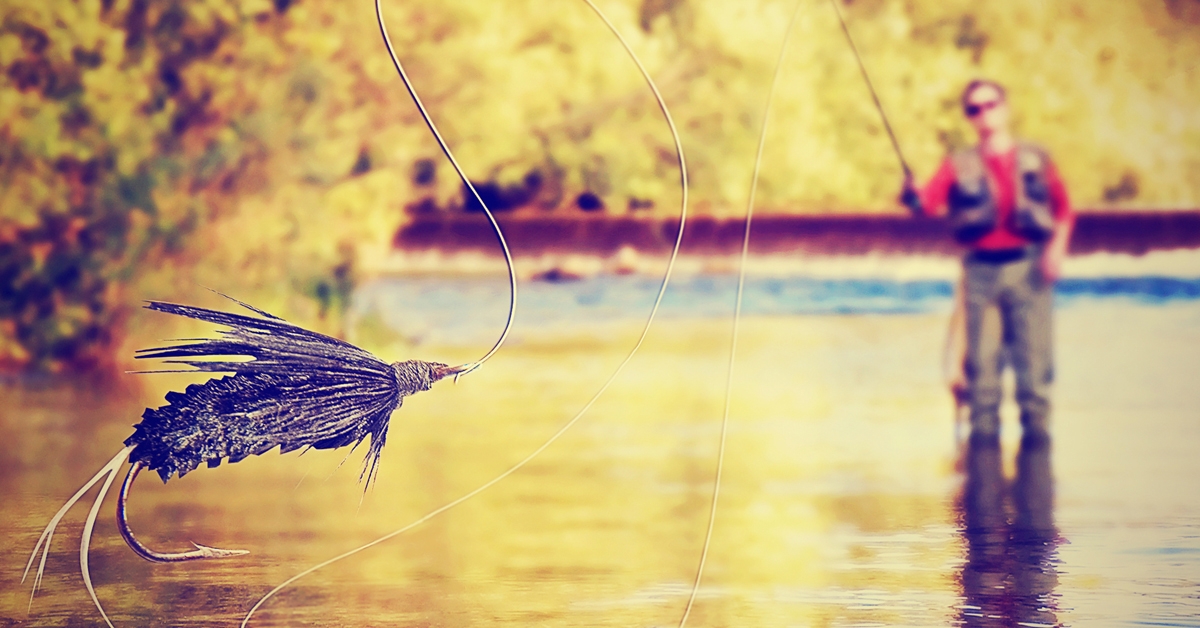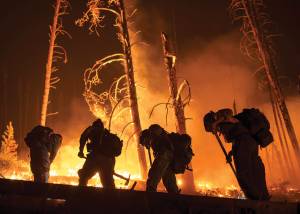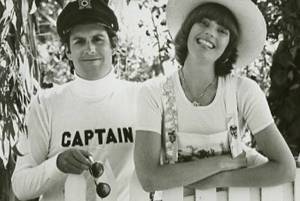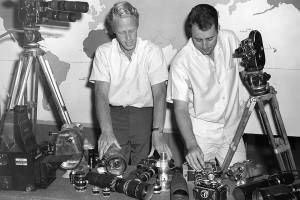by HOLLY ENDERSBY
Despite what some fly fishermen would have you believe, successful fishing boils down to three things: what fish eat, where they hide out, and what their activity is at a specific time of year.
Food is the dominant factor in fly fishing, with a focus on the type of food the fish you want eats (insects), the color that attracts them to that bug, and the size of that morsel.
Unless the fly you are using looks like fish food, the best rod, waders, and presentation won’t matter. If fish aren’t actively looking for food, they are often resting, so learning to read water is also a key ingredient for success.
Look for resting areas behind large rocks or in quiet bank-side water or the seam where quiet and livelier waters meet.
Then there’s sex. When spawning, most fish don’t actively feed, but they do get testy, especially the males, and they will hit a fly just out of sheer aggressiveness at that time.
Getting started fly fishing shouldn’t be intimidating. Chris Hunt, a resident of Idaho Falls and author of three books on fly fishing (Shin Deep, Fly Fishing Idaho’s Secret Waters, and A Fly Fisher’s Guide to Idaho’s Small Waters), said beginners will do just fine with a nine-foot, 5-weight rod-and-reel combo.
“You can get this set up for around $140,” Hunt stated.
Any decent sporting goods store will carry the right gear, including an assortment of flies to cover a variety of fish and different water. Artificial flies match a specific life stage of an insect: they are either a nymph, emerger, or adult.
For small streams, Hunt recommends a selection of dry flies (they float on the surface), such as an elk hair caddis, a stimulator, an Adams, or a Royal Coachman.
“Bigger water requires some streamers or flies, like a wooly bugger,” Hunt added. “For subsurface insects, try a stone fly nymph or a caddis fly nymph.”
Hunt recommends stopping by a fly shop near water you want to fish. “There’s nothing like local knowledge. These shops can steer you to the right flies to use,” he said. “And if you buy your rod-and-reel combo from a shop, they often throw in a lesson with the purchase.”
No matter where you fish, what they are eating at the time you are heading out to the water is critical information. Those local fly shops can be a real help to beginners and experienced anglers.
Chuck Robbins, resident of Dillon, Mont., guide, and author of Flyfisher’s Guide to Montana, recommends checking the fishing news boards in local fly shops for what’s hatching and the flies successful guides are using. “This information comes from the guides who are out on the water every day,” Robbins said.
Both Robbins and Hunt recommend hiring a guide for a day and learning all you can from an expert. At first, learning to cast can be frustrating, so personal instruction from a guide will help you become proficient much more quickly.
According to Robbins, anglers have a rich diversity of rivers to choose from for a guided trip near Dillon.
“There are great rivers to sample within an hour and a half of town. The Jefferson, Ruby, Big Hole, Missouri, and Beaverhead are all terrific fisheries,” he said.
“Both Idaho and Montana are loaded with world class trout fisheries,” said Hunt. “You could fish your whole life and never cover all the streams and lakes these two states offer.”
He recommends checking out more remote waters and keeping a DeLorme Atlas & Gazetter for each state in your rig.
“You can use Google Maps, too, but if you’re out of cell service, the Gazetters are always available.”
This past November, an angler pulled a 30-inch rainbow trout out of the Boise River near downtown, so don’t forget waters close to or in cities as well.
“The Boise is a four-season river,” said Hunt. “You can have a great time fishing it through town all the way to Eagle before water gets too warm for trout in the summer months.”
In Missoula, the Clark Fork lures anglers with smallmouth and largemouth bass as well as some pike, and the access couldn’t be easier. Further north the river is flush with several species of trout.
The nearby Bitterroot holds populations of trout and big browns as well. It’s hard to beat the Missoula location for fishing options as just west on Highway 12, anglers can ply the waters of the famous Lochsa River over the border in Idaho.
Mountain fishing in Idaho is good on the Payette River between Banks and McCall. This is a summer stream as the spring runoff is ferocious. Further north, anglers can try their hand at steelhead in the late winter in the Little Salmon River, and summer means smallmouth bass in the big Salmon River as well as spring chinook and steelhead.
Feeder streams to the Salmon, like the Rapid River and the Wind River, are classic pool-and-drop and yield some very nice trout.
The Beaverhead in Montana is easy to fish because walking and wading aren’t difficult, but it doesn’t give up fish easily.
“It’s got big fish,” said Robbins, “but the flow depends on the dam’s water release, so it can be tricky. But the upper section of the Beaverhead is as good as any river in Montana.”
Hunt and Robbins agree the Big Hole is special. “It’s my favorite river in the whole country,” declared Robbins. “There are some monster fish in it, and every section is different.” He noted that summer wade fishing at the Big Hole is easy with tons of access, while the upper reaches are classic riffle-and-pool.
Hunt added that the Big Hole offers a unique opportunity for fly fishermen. “It has native arctic grayling, and that’s a pretty neat fish to go after.”
In addition, Robbins added brown trout, rainbow trout, westslope cutthroat, brook trout, and mountain whitefish to the list of fish in the Big Hole.
Trophy trout waters in Idaho include the South Fork of the Clearwater, the St. Mary’s and St. Joe in the north, the Big Wood River near Ketchum and Hailey, and on the east side the South Fork of the Snake and the Henry’s Fork of the Snake.
“The Yellowstone country has an amazing number of excellent rivers for fishing,” Hunt said. “The Madison, a legendary Montana stream, the Yellowstone, Firehole, Lamar, Gardener, Gallatin, and Shoshone are all in the national park.”
Hunt recommends anglers check in at West Yellowstone Blue Ribbon Flies for information on what flies to use as well as which guided trips to take.
“The owner is a fly fishing legend,” said Hunt, “and they offer amazing day trips.”
Robbins was quick to add that the reservoirs of the upper Missouri also all have great trout fisheries.
“Clark Canyon Reservoir has great big trout, with some reaching 20 inches and in the 14-pound range.”
Further north in Montana, both the Yaak River and the Flathead have good populations of brook trout and mountain whitefish in addition to Cutthroat in the Yaak and bull trout in the Flathead and its tributaries.
There are literally a lifetime of rivers, streams, lakes, and reservoirs to explore in Idaho and Montana, so grab that new rod and reel, a handful of flies, and get going!










